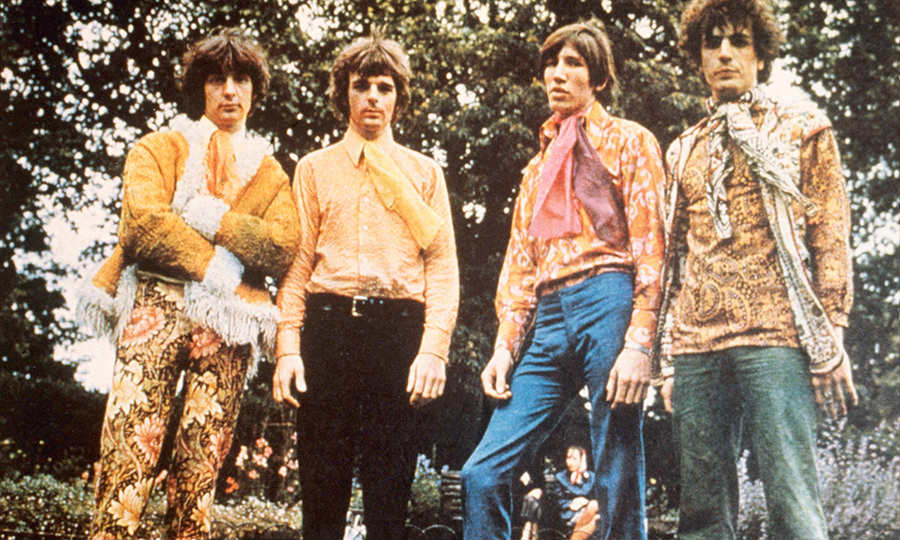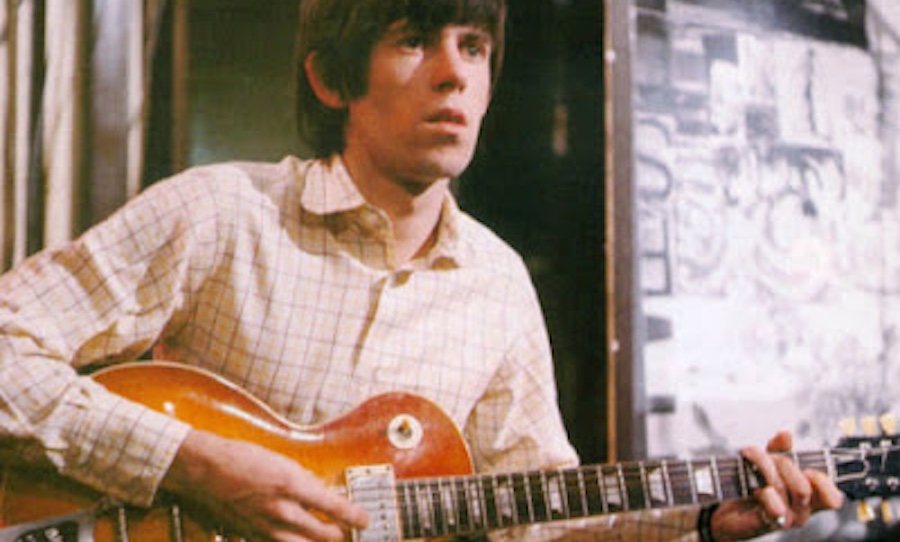A remarkable constellation of madcap sound, nothing like Pink Floyd’s The Piper at the Gates of Dawn had ever been heard before and nor would it ever be again.
An immaculate pop record rampant with quirk and possibility, The Piper at the Gates of Dawn hit with an energy and fresh enthusiasm Pink Floyd would never recapture.
Cast against the backdrop of the acid-soaked Summer of Love, it set fractured tales of whimsy to melodic pop and spaced-out guitar riffs. Piper may lack the sweeping grandeur of later, more iconic Floyd, but with Syd Barrett at the helm, it offers a flash of excitement and stylised extreme.

Impressed by one of the most creative and impenetrable minds to ever touch itself to popular music, the long-player taps into something poetic, pastoral and unequivocally English. A cosmic transmission to Swinging London, it announces both the arrival and meteoric decline of the golden child of English psychedelia.
Raw, crazy and unique, it embodied the spirit of an age.
By 1966, what had started as a loose collection of art and architectural students from Cambridge began to move away from R&B standards towards a more psychedelic sound. The quartet, now playing under the name of Pink Floyd, headed a second wave of ‘60s acts steeped in a new ideology. Unlike the previous generation of rock bands which had matured from teen sensations, Pink Floyd began indoctrinated with the idea of music as a serious art.
While San Francisco’s Haight-Ashbury may have been the primary loci of counterculture’s initial eruption, London was its second home. As song structures were dissolving, an anarchic and decadent music scene spontaneously emerged around the city’s UFO Club. Having quickly found an accepting and sizeable fanbase at the London hangout, by the close of ’66 Pink Floyd had become its de facto house band.
Garbed in foppish clothing, the group delivered chaotic live sets custom built for acid culture. These performances were known as ‘happenings’. Liquid light shows provided sensorial immersion while the group laid out hypnotic beds of instrumental rhythm.
While all four members of Pink Floyd showed a remarkable affinity for experimental sound, Keith “Syd” Barrett was the group’s magnetic centrepiece. A strikingly handsome painter who had joined in ‘64, the genial creative could project a sense of both mystique and beguiling charisma. His gregarious nature embodied the excitement and decadence of the time, yet masked a disconcerting fragility.
Fuelled by drugs, radical ideas and new technology, Barrett was constantly renegotiating and rewriting his music. He possessed a narrow and intense creative focus, which spilled forward in seemingly every direction.
Yet the fruits of his mind often came together with wit and precision. From within the tangled mind of Barrett sprung unconventionally structured pop, purpose built to be accompanied by lengthy and spontaneous ‘freak-outs’.
Live his jagged lead guitar would play with distortion, feedback, echo, slide techniques and wah. And as the group’s chief songwriter, he harboured an instinctive knack for melody and wordplay. He would write eight of the 11 songs on their forthcoming debut.
Backing Syd was the quietly ambitious trio of bassist Roger Waters, percussionist Nick Mason and organist Richard Wright. While lysergic vibrations abounded and LSD had become popular even during the group’s Cambridge days, Syd’s bandmates would seldom indulge. In stark contrast, Barrett was consuming the drug, amidst a cocktail of others, at an astonishing rate.
At the onset of ‘67, Pink Floyd had become the hip poster boys of London’s psychedelic scene. The group signed to EMI in February that year. After recording charting singles Arnold Layne and See Emily Play with UFO owner Joe Boyd, the group were paired with an in-house producer to prepare a debut album.
EMI’s selection was Norman Smith. The ambitious recordist may not have been attuned to the group’s wavelength, but he quickly recognised their commercial potential. Working as an engineer under the auspices of George Martin, Smith was heavily involved with The Beatles right through until Rubber Soul. As a result, he was receptive to working in unconventional and outright alien (for the time) recording techniques.
Furthermore, he was no stranger to headstrong creative talents. Norman would bring across the Fab Four’s proclivity for sonic collage, sped up recordings, tape splicing, pocket orchestration and double tracking.
Recording sessions for The Piper at the Gates of Dawn would take place at Abbey Road Studios between February and May that year, contemporaneously to The Beatles’ Sgt. Pepper’s Lonely Hearts Club Band and The Pretty Things’ S.F. Sorrow. Additional work would also occur at Sound Techniques, Chelsea, where the group had recorded their earlier singles.
Six of the songs came readymade from Pink Floyd’s live set while others were developed during the sessions. Holding their sound together, Smith would coyly tease out the more melodic and pop-savvy elements of the band’s material.
What the group produced coheres into a powerful sonic statement. It blazes with the bright spark of energy, skirting convention with impunity. It presents simplistic yet inventive ideas with ground-breaking quirk. Each track comes laden with fresh ideas and new possibilities, yet the album packs no shortage of mind-blasting bombast.
Discordant opener, Astronomy Domine welcomes the listener into a world of cut-up vocals, sliding riffs and a Morse code pulse. Scorching fretwork accompanies manager Peter Jenner’s astrological recitations via a megaphone that Syd would often employ live.
Lucifer Sam loosely swirls within a mass of infectious riffs, eerie organ and an equally engrossing narrative concerning Syd’s pet cat. An ecstatic and ominous Syd sings, “That cat’s something I can’t explain” and it’s difficult not to shake the feeling that there’s an element of self-projection.
With Richard Wright on vocals, the Stygian Matilda Mother showcases a marriage between the mood settings and progressive arrangements of later Floyd with Barrett’s escapist pop. A final addition during the studio sessions, the hard rocking Flaming marks a return to buzzing riffage. The jazzy improvisation of Pow R. Toc H. builds around the group’s vocal percussion, a primitive form of beatboxing. An unhinged moment of freaked-out genius it accompanies Take Up Thy Stethoscope and Walk, Roger Waters’ first solo songwriting credit.
Interstellar Overdrive’s discordant descent transports the listener into the groove and intuitive flow of the group’s live set. With its central motif inspired by manager Peter Jenner’s humming of Love’s cover of pop standard Little Black Book, it showcases a lighter and more expressive sound. The Gnome sees Barrett abstract The Lord of The Rings into his own bizarre fantasy.
Chapter 24 drawls, drones and dabbles in Eastern mysticism as Syd recites from the spiritual tome I-Ching. Laced with folksy resignation, the woodblock rhythm of Scarecrow continues this plod into absurdity. Arcadian nostalgia trades places with spaced-out futurism.
Closer Bike verges on sickly-sweet. Forever twisted in dual meaning, it exemplifies Syd’s surrealistic juxtapositions of psychedelia with dry observation. It’s as close to being taken inside of Barrett’s state of mind as any the listener is likely to get.
Barrett had given the group its name, reputation and, with the success of Piper, a Top 10 hit. Yet like the decade he embodied, his whimsical sunshine promise belied an illusory utopianism. As quickly as he reached his zenith no sooner did he evaporate: after his stroke of tripped-out genius on Piper, he lapsed into LSD-induced mental illness.
The ambition of Floyd did not meld well with Syd’s increasingly unmanageable behaviour. On and off-stage Syd was oscillating between erratic and listless, he would push tolerance beyond human limitation. The group began to implode. Following an aborted US tour and series of botched television appearances, Syd was involved in studio work on their follow-up LP A Saucerful of Secrets but to little avail.
The final stroke would fall with Have You Got it Yet?. Rehearsing the song, Syd would chant the title while the remainder of the band would follow his impossibly complex chord pattern. When they would approach something near what they thought Barrett desired, it would change again. The band never did quite get it and Syd exited in early 1968.
Following a string of commercially disastrous solo efforts, the ex-Floyd frontman turned his back on music altogether, retreating into seclusion in 1972. For all his insight and mad genius, the group’s leader had devolved into little more than an acid shell. A cracked genius with a thousand-mile-stare. A man helplessly entangled within his own disintegration.
Yet Syd’s hermit-like seclusion would only enhance his mystique. A cult of celebrity sprang from his absence. A lost soul canonised as the archetypical washout, even after his death in 2006 he remains an unfathomable figure. A musical icon imprisoned in myth and forever possessed with auto-destructive charm.
It’s divisive whether Piper signifies the untimely demise of Syd’s Pink Floyd or the genesis of the commercial juggernaut that would continue under the name. Likely it’s a little of both. Syd’s musical presence may not be found past A Saucerful of Secrets, but many of his ideas would be exaggerated, refined, amplified or taken further on later albums.
Soon Pink Floyd would shift from inspired amateurs to commercial workhouses, ascending to soulless megastardom. Yet untouched by the bright spark of Syd they may never have spoken past the raw power of their debut. Hip heartthrob that he was, Piper saw Syd bow out; one cat which quite simply couldn’t be explained.



